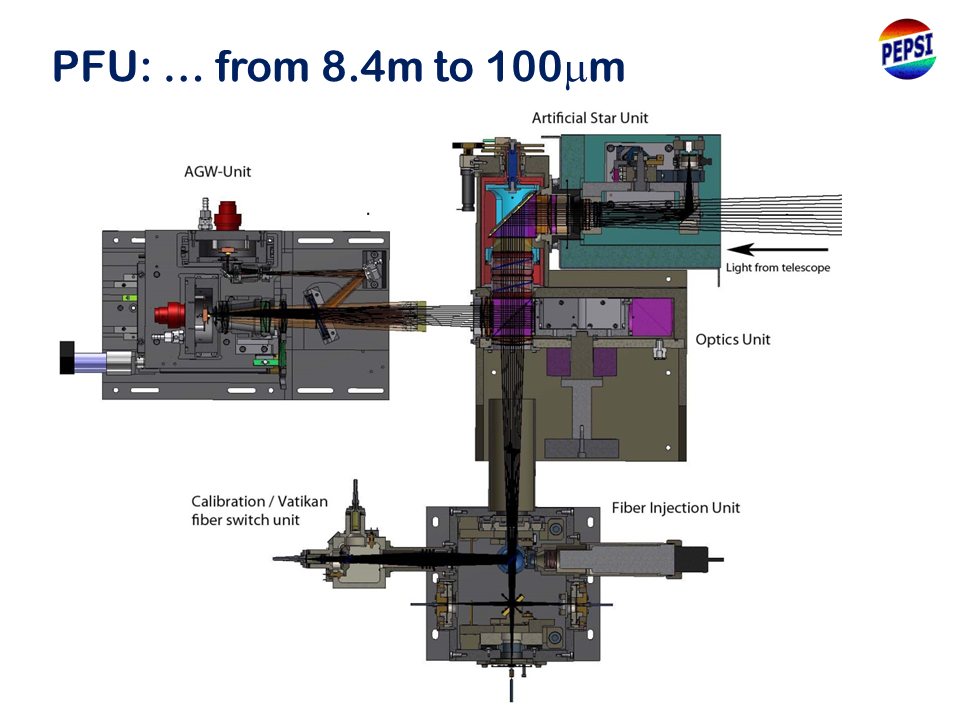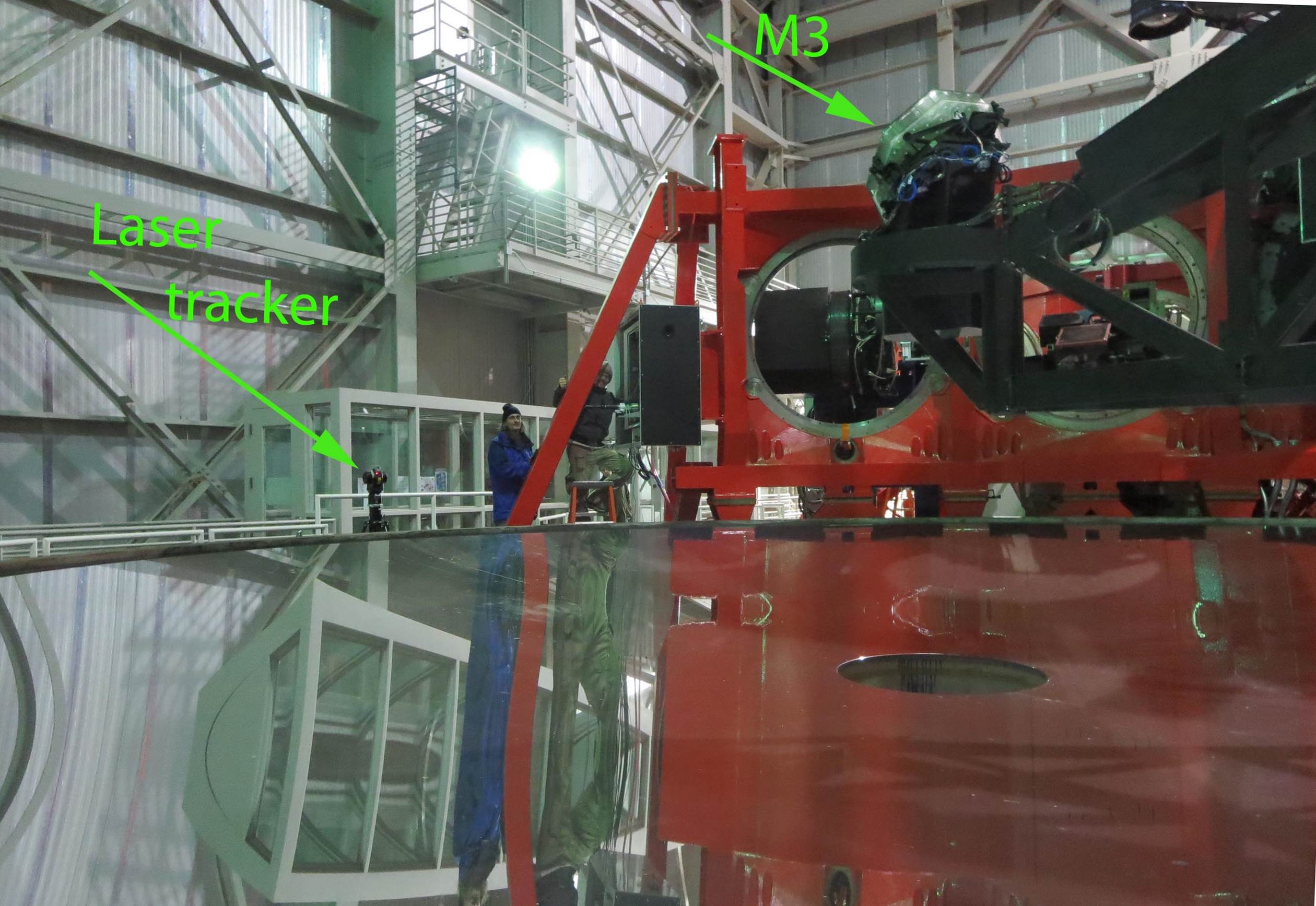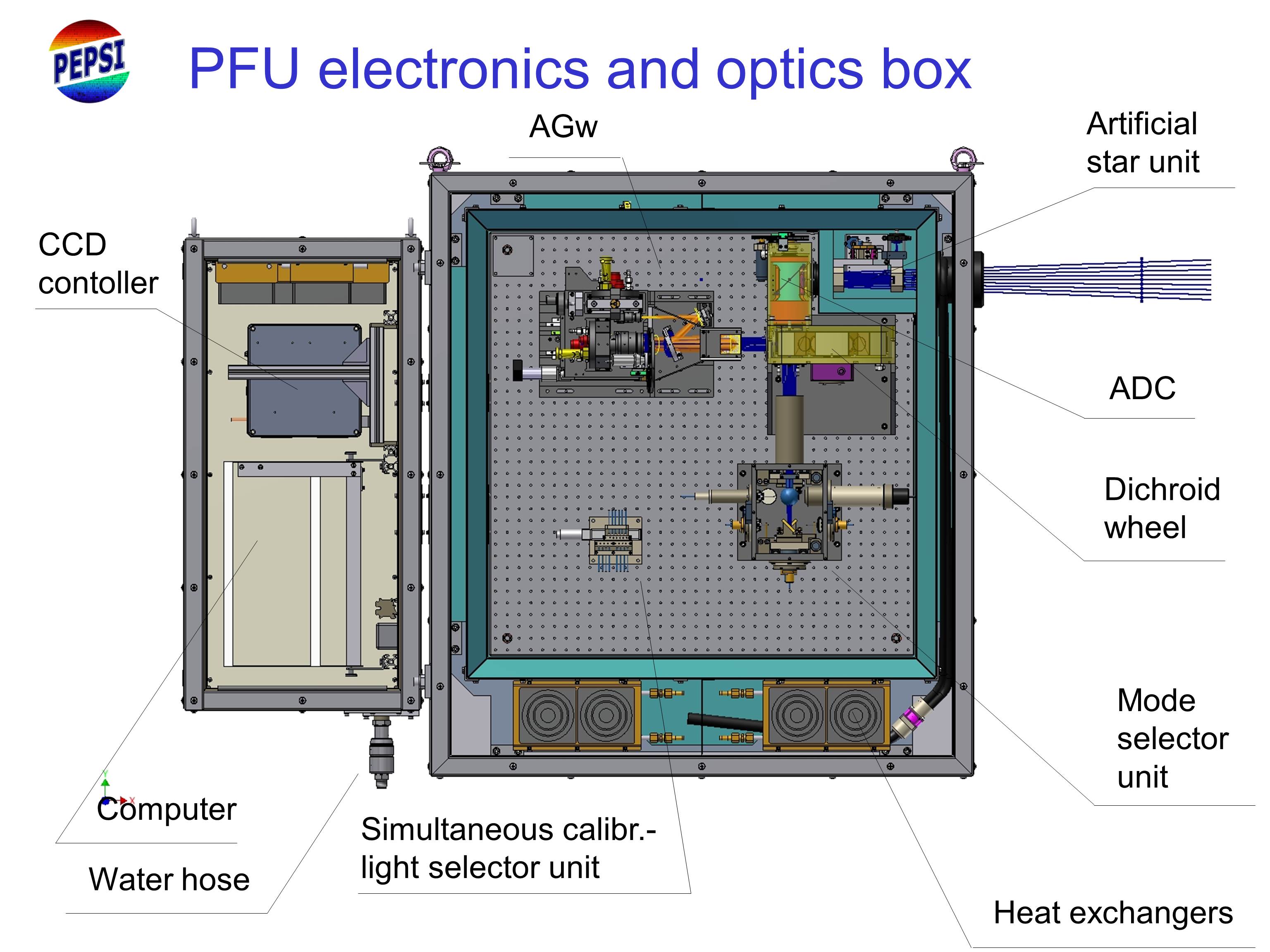PEPSI has two permanently mounted telescope focal stations called PFU-SX and PFU-DX. These units are used for target acquisition, guiding, and low-frequency wave-front sensing (AGw) as well as for fiber coupling from and to the various spectrograph subcomponents. The two PFUs are reached with starlight by rotating the telescopes’ M3 mirrors on the swing arms to an angle of 47deg from the optical axis of the central station. It should take no longer than 10-15min to be on sky.
Each PFU has an artificial star unit (a LED) that also acts as the cover shutter to prevent dirt (and water) to enter the PFU. A collimator lens creates a parallel beam within which the ADC and a set of 6 dichroic or grey beam splitters are located. All optics in the collimated beam is immersed in oil matching their average refraction index. The split light enters the AGw to the left or right (SX vs. DX) while the straight-through light is reimaged onto the fiber heads. A set of two folding mirrors, each one split into two mirrors again, one aluminized and one silverized, redirects the light to the respective fiber heads. The fiber heads are positioned such that the 100-mu fiber for the ultra-high spectral resolution does not need any of the folding mirrors (straight-thru position) while the other two are located at an angle of 90deg on the left and right, respectively. Each of the fiber heads is actually a pair of fibers sticking out of an aluminized flat mirror. One of the fibers is positioned onaxis and is the target fiber, the other one is off-axis and receives light by a sky position 6 arcsec away from the target. The target fibers go directly to the spectrograph and are 44m in length. The sky fibers are cut and fed into a fiber selector unit that allows the light either to continue to the spectrograph or instead receive calibration light from the stabilized Fabry-Perot unit (see Calibration Unit).




